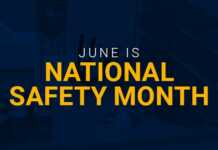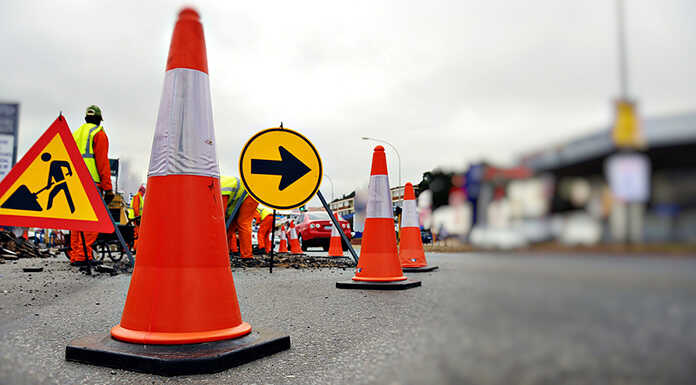According to the Bureau of Transportation Statistics, Americans make over one billion trips by car daily. And according to IBIS World, there are also over 300,000 road construction workers in the US. Unfortunately, 2,103 workers lost their lives between 2003 and 2019, according to the National Institute for Occupational Safety & Health (NIOSH). An average of 124 per year.
Because of this, The Federal Highway Administration designates the second week in April as National Work Zone Awareness Week. Here is some helpful information for people on both sides of the cones to help keep each other safe.
For drivers, the message is simple, slow down and pay attention. Work zones are not only hazardous for workers but also for drivers. According to NIOSH, an average of 774 drivers and passengers per year lose their lives in work zones. This can be from changing traffic patterns to suddenly stopping construction vehicles. Below are some ways for your drivers to get prepared for the trip ahead:
- Find out if the route is under construction and plan extra time.
- If you are driving a larger vehicle, maybe take a different route.
- Increase your tailing distance when in the work zone to account for sudden stops or slowdowns.
Driving at night or in inclement weather can be especially dangerous. The Connecticut Department of Transportation has ten tips to help keep you safe:
- Expect the unexpected – Normal speed limits may be reduced, traffic lanes may be changed, and people may be working on or near the road.
- Slow down – Speeding is one of the major causes of work zone crashes.
- Don’t tailgate – Keep a safe distance between you and the car ahead of you, especially if you’re driving in inclement weather. The most common crash in work zones is the rear-end collision, so leave two car lengths between you and the car in front of you.
- Keep a safe distance between your vehicle and the construction worker an their equipment.
- Pay attention to the signs – The warning signs are there to help you and other drivers move safely through the work zone. Observe posted signs until you see the one that says you’ve left the work zone.
- Obey road crew flaggers – The flagger knows what is best for moving traffic safely in the work zone. A flagger has the same authority as a regulatory sign, so you can be cited for disobeying their directions.
- Stay alert and minimize distractions – Dedicate your full attention to the roadway and avoid changing radio stations or using cell phones while driving in a work zone.
- Keep up with the flow of traffic – Motorists can help maintain traffic flow and posted speeds by merging as soon as possible. Don’t drive right up to the lane closure and then try to barge in.
- Schedule enough time to drive safely and check radio, tv and websites for traffic information – Expect delays and leave early to reach your destination on time. Check your local department of transportation for traffic information.
- Be patient and stay calm – Work zones aren’t there to personally inconvenience you. Remember, the work zone crew members are working to improve the road and make your future drive better.
For workers in work zones, there is a bit more to think about to stay safe:
- Wear your high-visibility and retro-reflective clothing.
- Stay behind barriers as much as possible.
- Make sure you have flaggers and crash trucks when working outside of barriers to help notify drivers and absorb a crash.
- Make sure you have an out or escape route. Don’t become stuck between a truck and a hard place.
- Having flaggers work to slow and stop traffic can help reduce the likelihood of an accident.

















